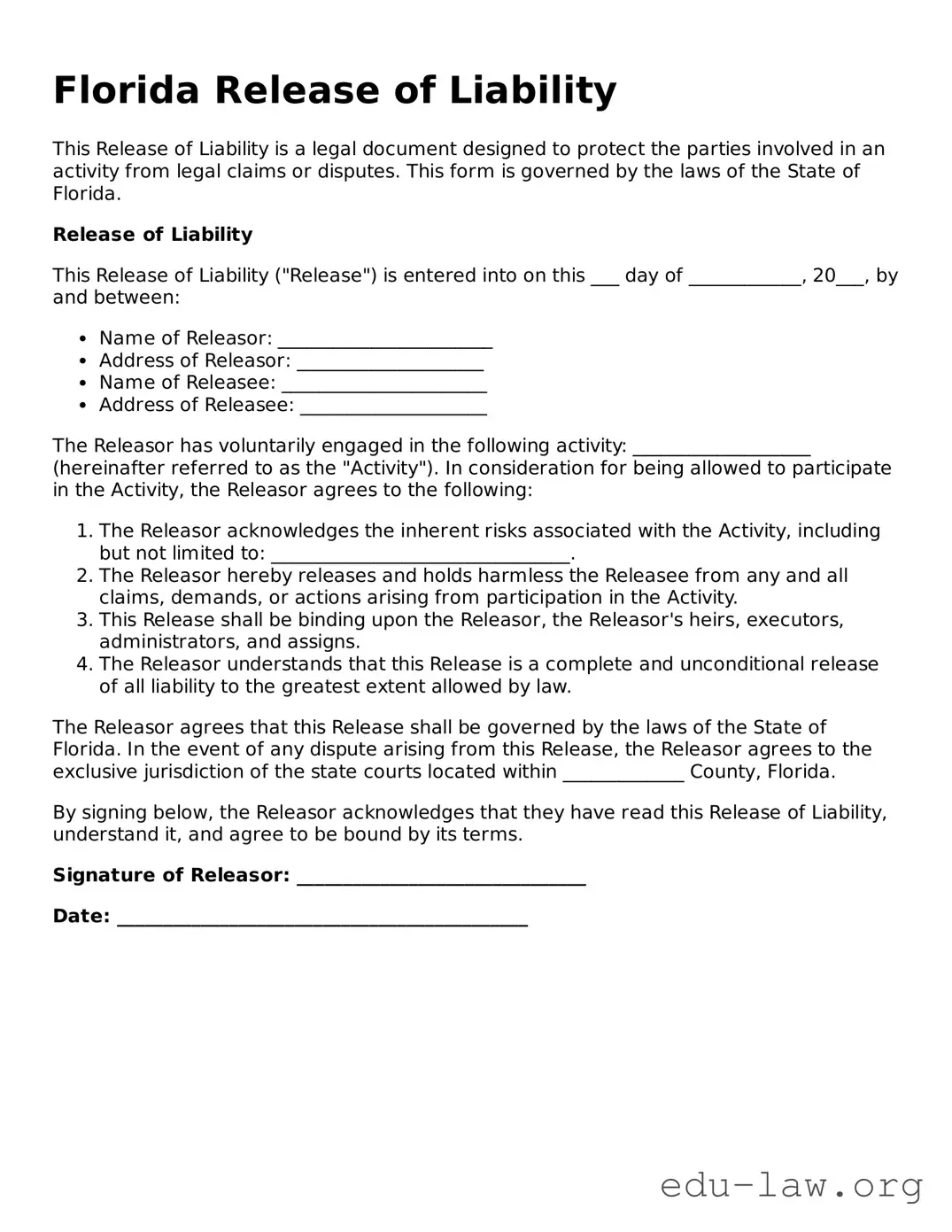A Florida Release of Liability form is a legal document that individuals can use to relieve one party of liability for certain risks associated with a specific activity. It typically protects the organization or individual providing the activity from legal claims that may arise from injuries or damages that occur during that activity. Common scenarios include recreational sports, tourism activities, and fitness classes.
You should use a Release of Liability form whenever you are engaging in activities that pose inherent risks. This could include outdoor sports, adventure activities, or any event where there is a potential for injury. By having participants sign this form, you reduce the risk of legal repercussions if something goes wrong.
What does the Release of Liability form protect against?
The Release of Liability form primarily protects against negligence claims. This means it can limit a party’s liability for injuries that occur as a result of the inherent risks of an activity. However, it does not protect against gross negligence or intentional misconduct. Always ensure the form is comprehensive and clear in its language.
Is a verbal agreement enough instead of a written form?
No, a verbal agreement is generally not sufficient. A written Release of Liability form holds up better in court and provides clear evidence of the participant's acknowledgment of the risks involved. It creates a concrete record that protects both the participant and the organization.
Can I enforce a Release of Liability form in court?
Yes, a properly drafted and executed Release of Liability form can be enforced in court. However, its enforceability can depend on various factors, including the clarity of the language, the understanding of the signer, and compliance with state laws. It's crucial to ensure that the form is drafted correctly to maximize its legal protection.
What if the participant is injured despite signing the form?
If a participant is injured after signing the Release of Liability form, the organization may still have some protection against liability, depending on the circumstances. The form should clearly outline the risks associated with the activity and ensure that the participant understands these risks. Legal consultation may be necessary if a lawsuit arises.
Can I modify a Release of Liability form?
Yes, you can modify a Release of Liability form to fit the specific needs of your activity or organization. However, any modifications should be made carefully, ensuring that the core elements of legality and clarity are maintained. It is advisable to consult with a legal professional to ensure modifications comply with state law.
Are there any specific legal requirements for a Release of Liability form in Florida?
While Florida does not have a specific statutory format for a Release of Liability form, it must be clear and unambiguous. The language used should explicitly state that the participant is assuming the risks involved. Including specific language about the liabilities being waived can enhance its enforceability. It is best to have the form reviewed by a legal professional familiar with Florida laws.
Do I need to have my Release of Liability form notarized?
No, notarization is not typically a requirement for a Release of Liability form in Florida. However, having a form notarized can add an extra layer of verification and may help strengthen its credibility in the event of a legal dispute.
